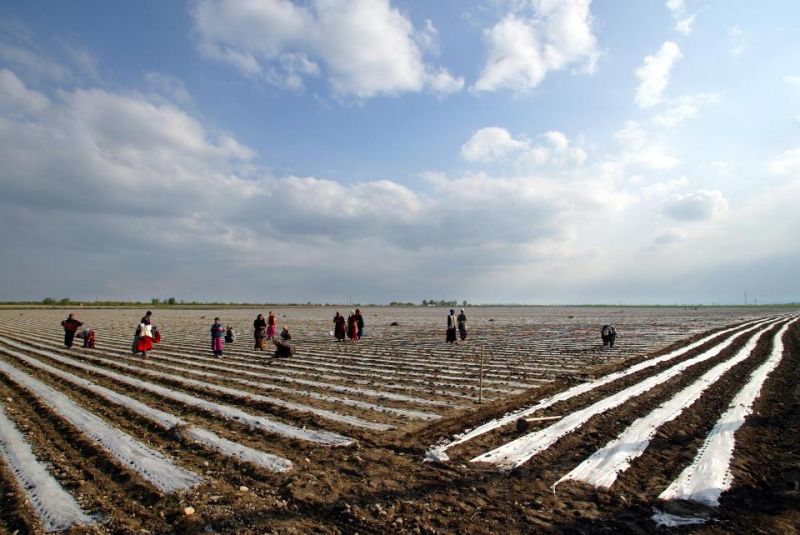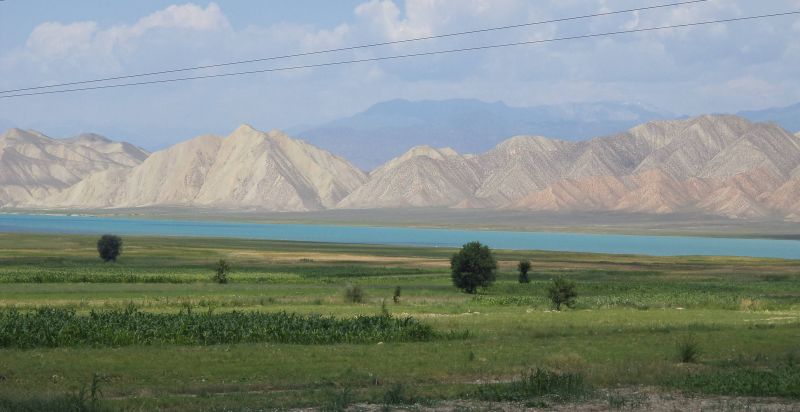Will Central Asia Fight Over Water Resources?
Published on by Water Network Research, Official research team of The Water Network in Government
Water has always been a major cause of wars and border conflicts in the Central Asian region.

Women pick cotton in 2005 in the town of Andijan, Uzbekistan, for farmers who are forced to sign annual agreements with the government to grow one of the country's leading exports. (AP Photo/Mikhail Metzel)
For being one of the greatest geographical regions, Central Asia has limited water resources. Modern history of the region has been fueled with various ethnic and territorial clashes. Apparently, the main catalysts behind conflicts have been attempts to take control of rich water resources.
The main sources of water in Central Asia are the Syr Darya and Amu Darya Rivers, mostly fed by snow- and glacier-melt from the Pamir, Hindu Kush and Tien Shan mountain ranges. The 2,200-kilometer Syr Darya originates in the Tien Shan, flows through Kyrgyzstan as the Naryn River and combines with the Kara Darya to become the Syr Darya.
The water resource crisis is not a new phenomenon in Central Asia. With the eventual fall of the Soviet Union, the resource-sharing system it imposed on the region totally disintegrated. The root of the problem is that the main water resources in Central Asia flow from territories of Tajikistan and Kyrgyzstan. Kyrgyzstan holds rule of downstream Syr-Darya flow at the Toktogul dam, while Tajikistan re-launched the building of Rogun dam on Vakhsh River, which was then shot down due to lack of funds and strained relations with neighboring Uzbekistan.

If completed, Rogun dam will be able to ensure mountainous Tajikistan electricity, as it is in need of energy. Despite its quite favorable location in an energy-rich region, the Central Asian country faces energy-related problems.
Kyrgyzstan faces the same problem with the water supply of Toktogul, which provides almost 90% of the country’s electricity. Tension also derives from conflict over the Toktogul water reservoir, which is a major point of contention for Kyrgyzstan and neighboring countries. The rich water resources of Kyrgyzstan further led to intensive border clashes with Uzbekistan several times. The latter deployed military troops along its border with Kyrgyzstan on March 24, 2016.
Undoubtedly, Uzbekistan’s attempt to reclaim Ala-Buka water reservoir in Kyrgyzstan territory flared up tensions in the border and led to a deterioration of bilateral relations. Even though both countries are still far from reaching consensus over the water reservoir, Bishkek plans to build a Kambarata-3 Hydro Power Plant to produce hydro-energy for exporting to neighboring states, which will give Kyrgyzstan significant leverage over Uzbekistan.
 The Kambarata hydropower plant would be built on the Naryn River, a tributary of the Syr Darya.
The Kambarata hydropower plant would be built on the Naryn River, a tributary of the Syr Darya.
Along with Rogun dam, these two are to be the largest dams in Central Asia, with potential generating capacities of 1,900 megawatts and 3,600 megawatts.
However, Tashkent strongly opposes this project, worrying that Kambarata will limit or disrupt the flow of irrigation water essential to its cotton fields and farmers.
Although none of these dams are completed yet, concerns over how they would shift regional balance of power in Central Asia rise intensely.
To conclude, it is safe to note that water resource relations between the conflicting parties mostly depend on their internal political power structure, as well as their mutual relations. Thus, water resources can be seen as a common “concern” of Central Asia since it is the only potential factor that can fuel regional conflicts. High-level mediation should be sought to reach a compromise among involved parties.
Although there is no guarantee that regional countries would collaborate on that issue, it could give an opportunity to aforementioned countries to modernize infrastructure and the management of water resources.
Blog by: Fuad Shahbazov
Policy analyst at Wikistrat Inc. and a regular political reviewer of The Times of Israel and BBC Middle East Monitor.
Read full blog on: Forbes
Media
Taxonomy
- Water Cooperation & Conflict
- River Studies
- Water Resource Management
- Community Based Resource Management
- Conflict Management
- Resource Management
- Dispute Resolution
- International Cooperation